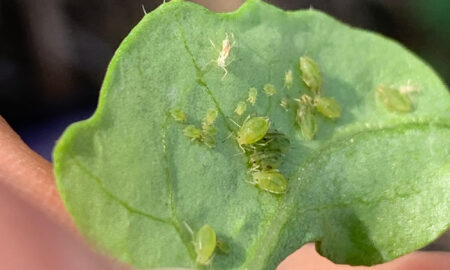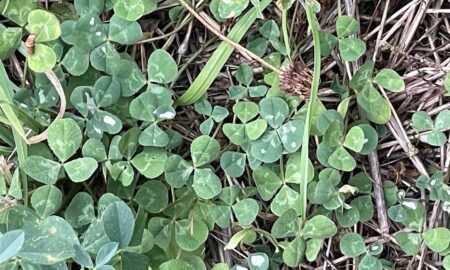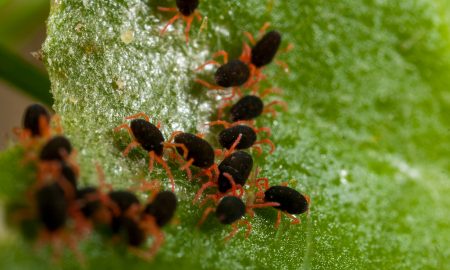While a sporadic species, the life cycle of the brown pasture looper (Ciampa arietaria) is such that their larvae can show up in winter crops and pastures.
Moths emerge from summer dormancy during autumn, mating and laying eggs. The eggs hatch during early winter and the larvae feed on plants, growing through several instars before reaching their full size by spring. During spring they pupate and become dormant, only to emerge the following autumn as moths.
Brown pasture looper larvae have been spotted in some crops and pastures in recent weeks. Here are our top 5 must-know points about this species during winter:
1. When they are young, they are dull
We often say that a tell-tale feature of brown pasture looper larvae is two wavy yellow lines running down their backs.
However, this feature may not be very obvious in current populations; newly hatched or very young larvae can look a pretty unremarkable dull brown or grey.
We recently received a sample of brown pasture looper larvae from the New South Wales Riverina, and the larvae were mostly ~2 mm – 5 mm long and didn’t display these yellow lines.
As a rule of thumb, the yellow wavy lines become visible once the larvae reach around 6 -10 mm in length, although you may need a macro lens or hand lens to see them.
The yellow wavy lines are much more obvious to the naked eye in older larvae, 20 – 35 mm in length, which are more commonly around in late winter and spring.
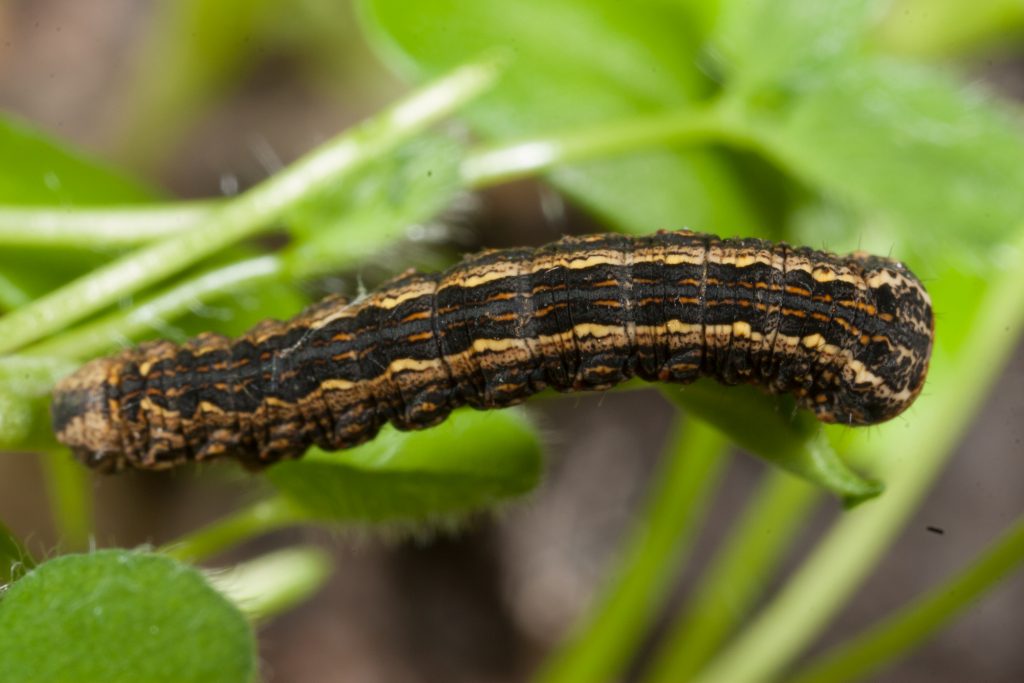
2. When they walk, they loop
The brown pasture looper is a ‘looper’, a term given to species of moths that have fewer than four abdominal prolegs as larvae. Abdominal prolegs are leg-like appendages on their ‘belly’ (abdomen) that are used for movement.
While pests such as cutworm and armyworm have four pairs of these abdominal prolegs, the brown pasture looper only has one pair, which they use along with another pair of prolegs at the very end of their body, known as anal prolegs, to move using a series of back arches.
These back arches result in a characteristic ‘looping’ motion as the larva moves; a behaviour that is noticeable in even very young larvae.
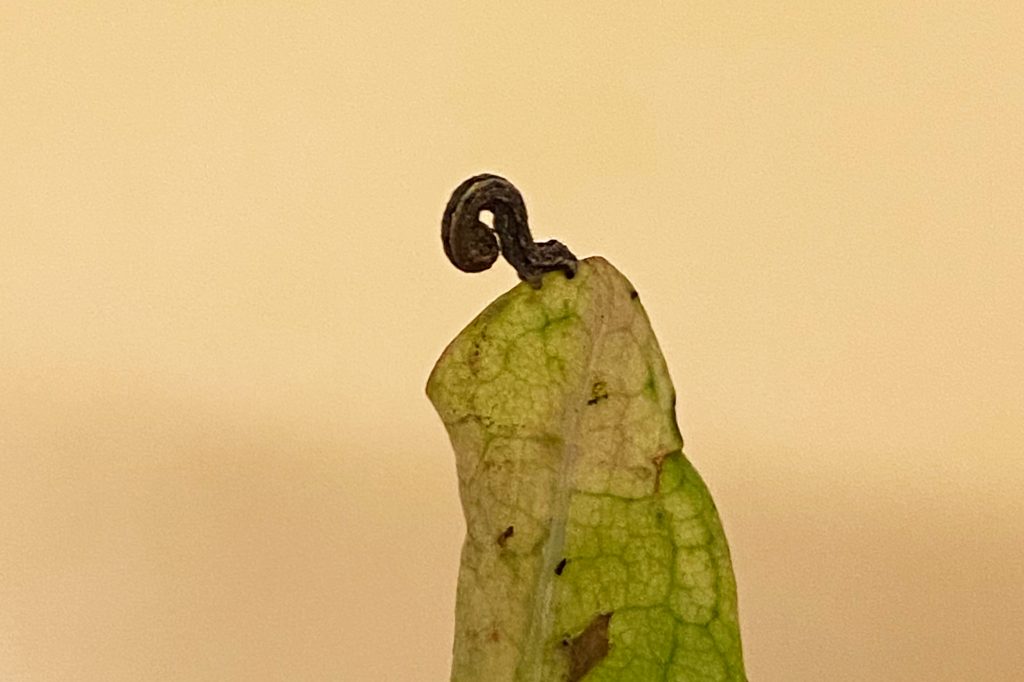
3. They love some broadleaf weeds
Brown pasture looper can be a sporadic pest of canola and some legume crops and pastures such as lucerne, clover and lupins. They are also occasionally found on cereals, although damage is usually minimal.
However, they do seem to prefer broadleaf weeds, particularly capeweed and Erodium sp., and are often found in weedy patches in paddocks.
If their preferred weeds are defoliated or sprayed out, this can encourage brown pasture looper larvae to move onto nearby crops.
Their tendency to be localised near weedy fence lines (particular those with adjoining pasture paddocks) or hotspots in crops means that spot spraying or border spraying with insecticides is often all that is required if control of brown pasture looper is warranted.
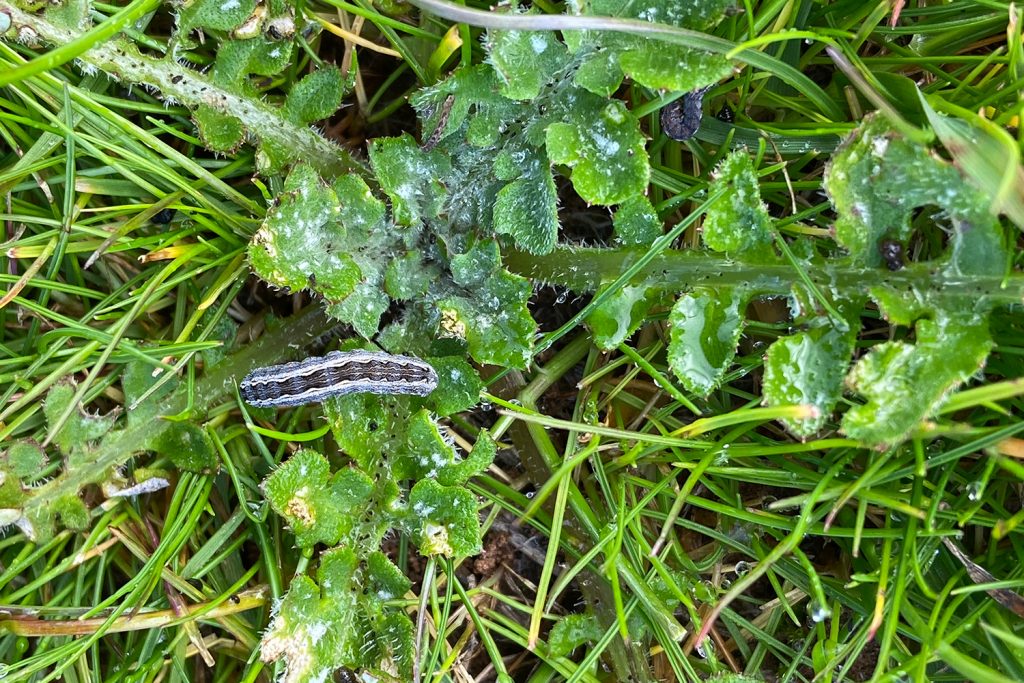
4. They become hungrier with age
Young, small brown pasture looper larvae (2 – 10 mm) lightly graze plants, creating little pits or windows in foliage and/or chewing the margins of leaves.
It is when the larvae reach their larger instars (20 – 35 mm) that they can really chomp through foliage and strip plants, doing the majority of their feeding.
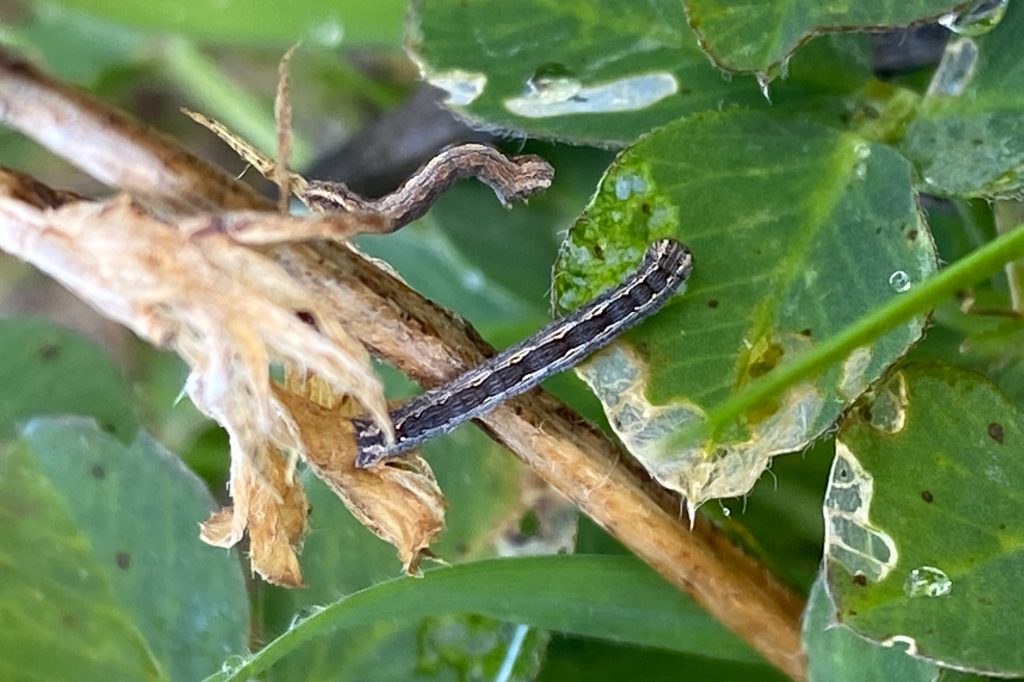
Photo by Elliot Lade 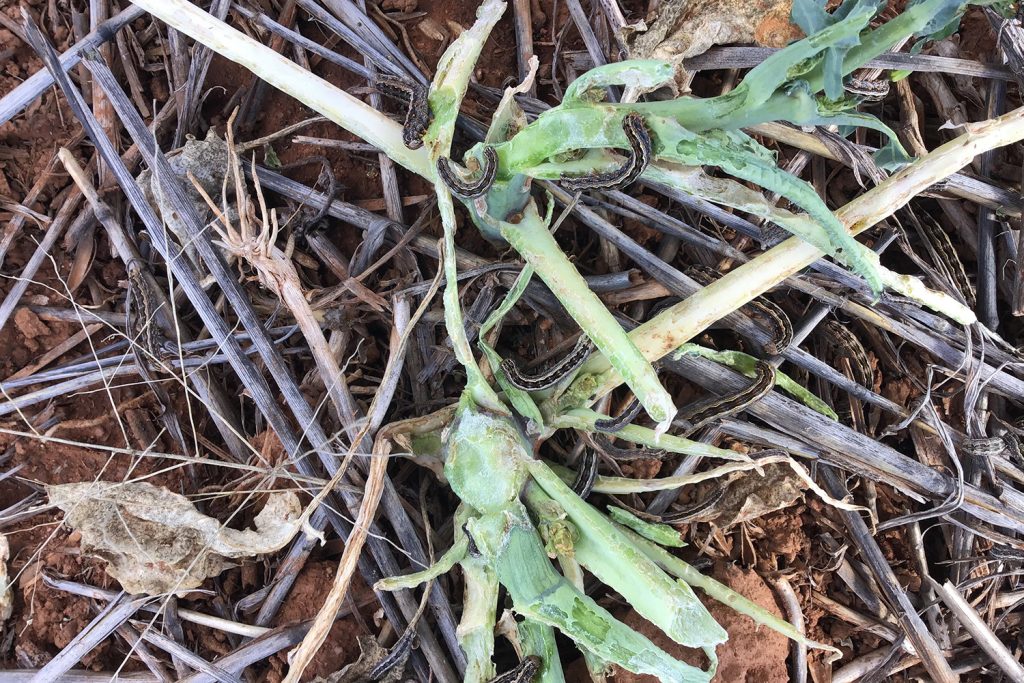
Photo by Terry Edis
5. Enemies are likely, but not well understood
As with many native insects in Australia, particularly those that aren’t key pests, there is no research in the scientific literature on the natural enemies of brown pasture looper.
But as a small, soft bodied insect, the brown pasture looper is very likely preyed upon by several generalist predators. For example, the spined predatory shield bug and the glossy shield bug are two generalists known to attack moth larvae, including loopers.
Acknowledgements
Thanks to the following for providing field observations: Angus Knight (Riverina Co-op), Elliot Lade (Nutrien Ag Solutions), Justin Whittakers (Nutrien Ag Solutions).
Cover image: Photo by Julia Severi, Cesar Australia


